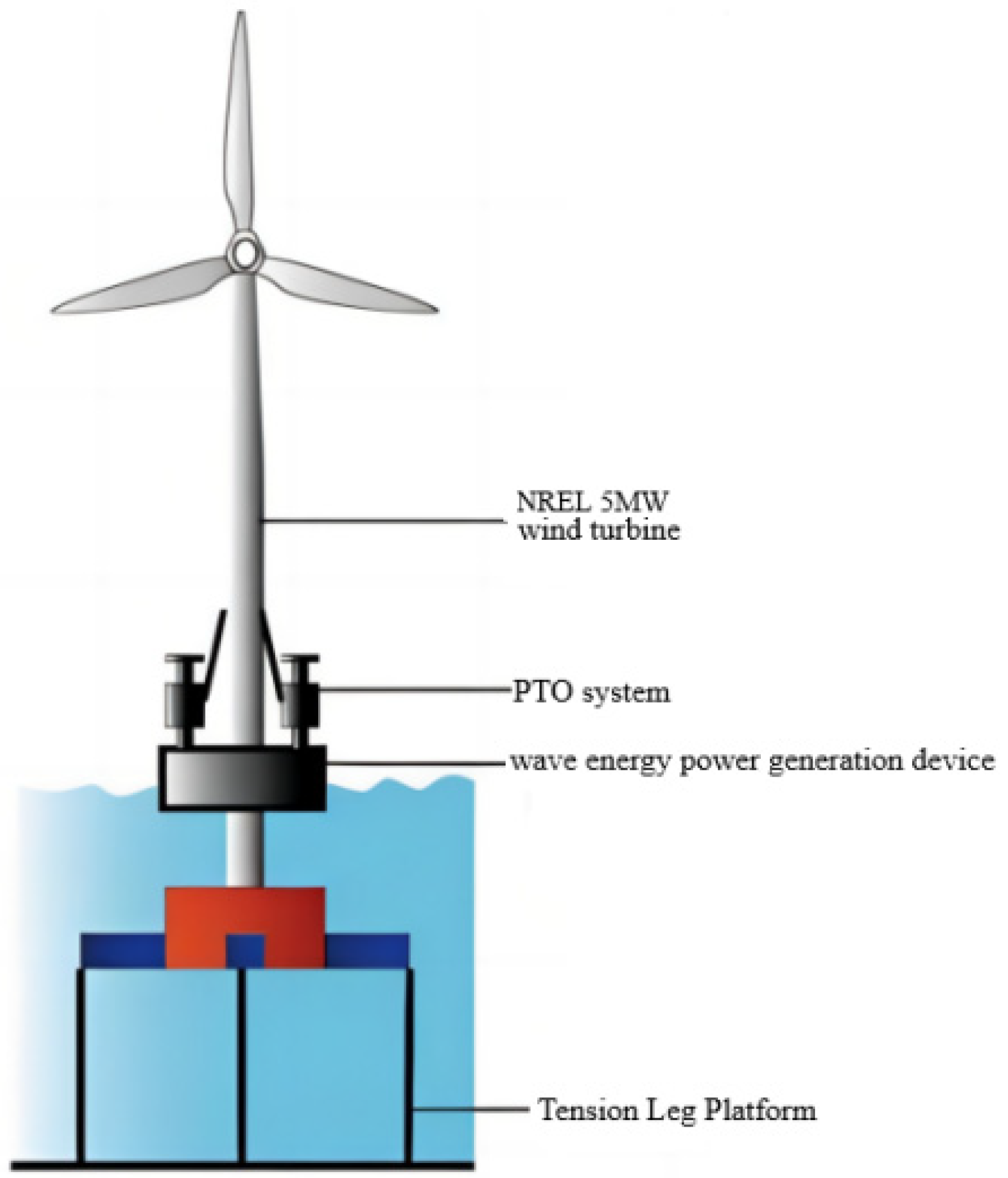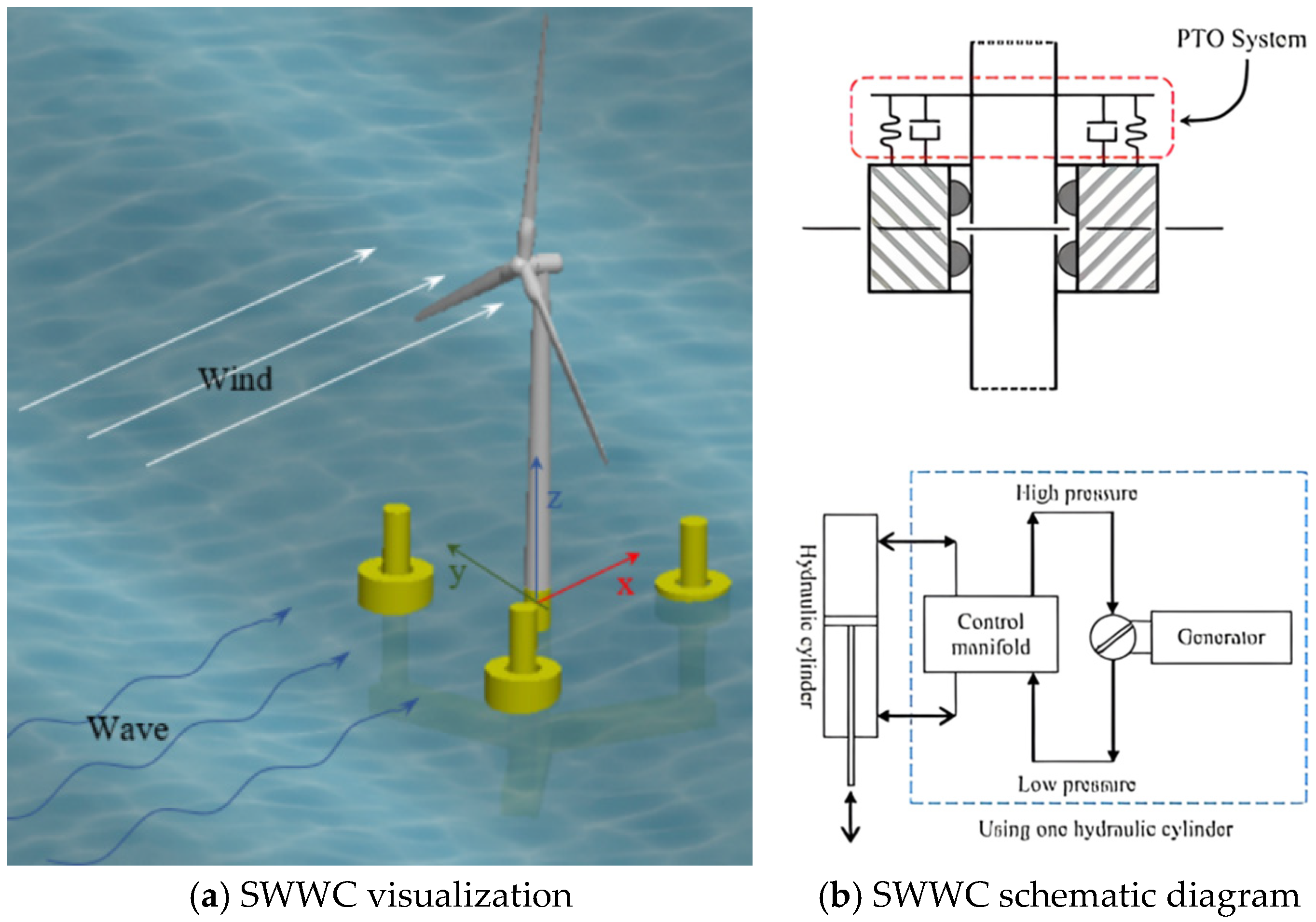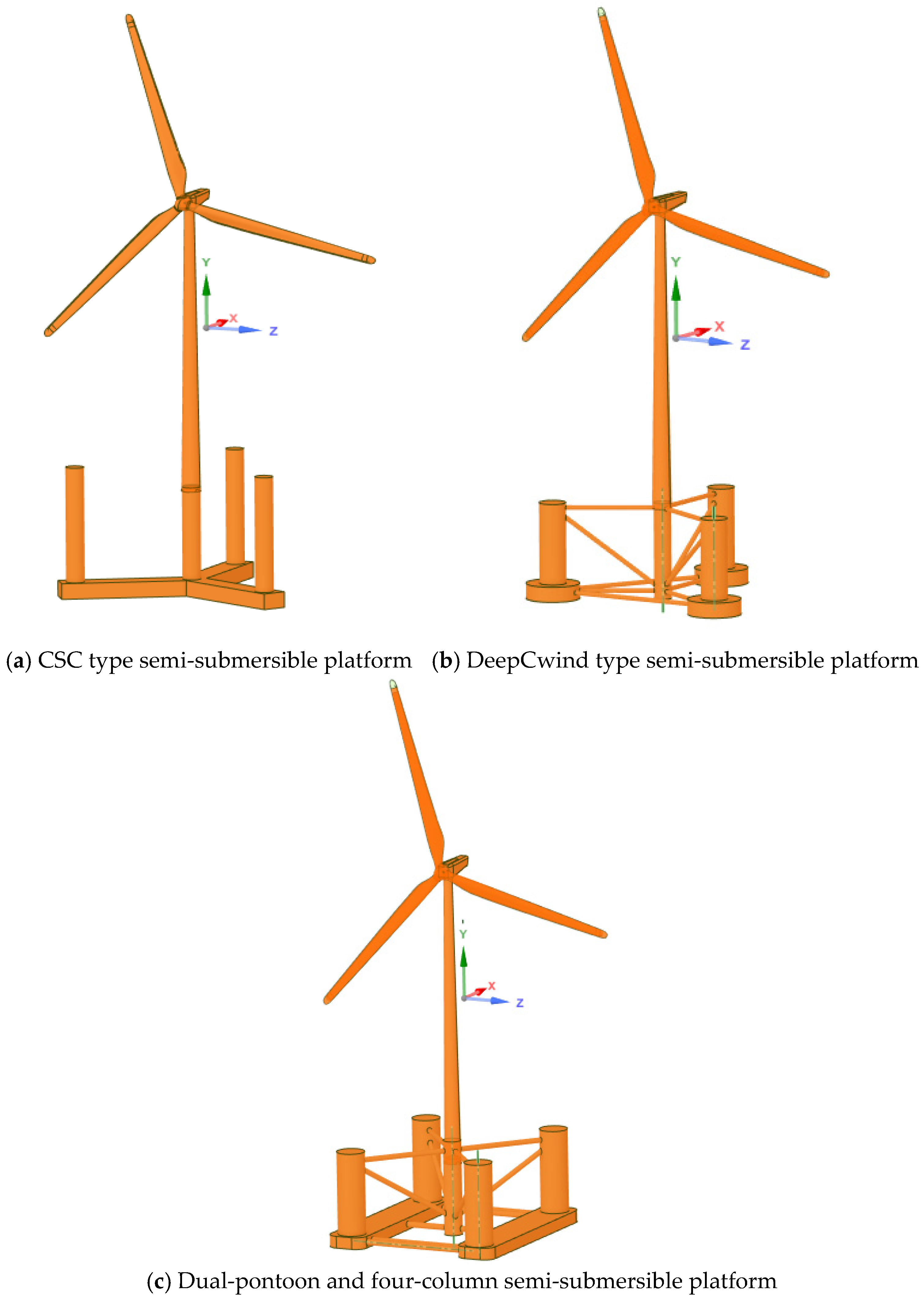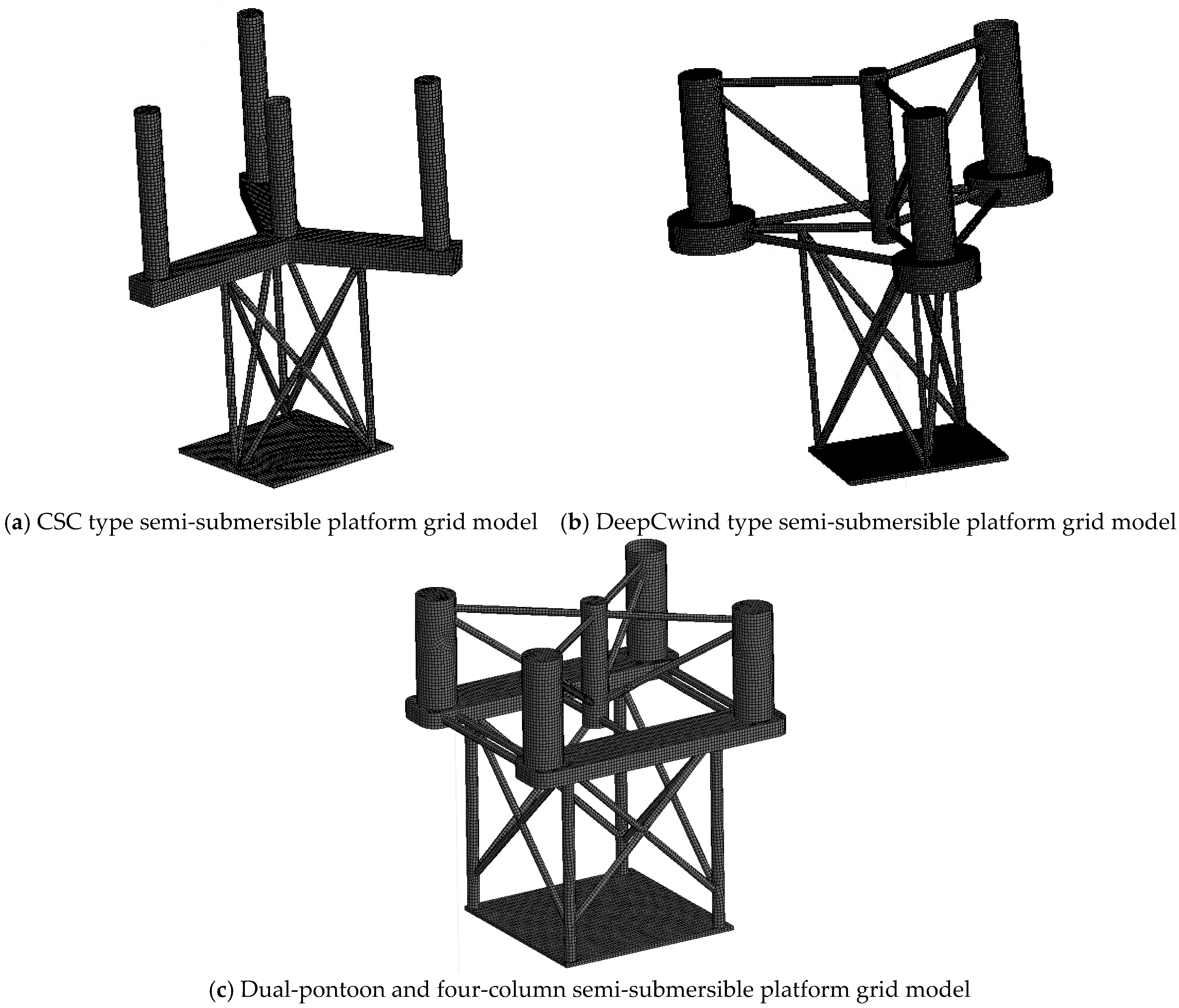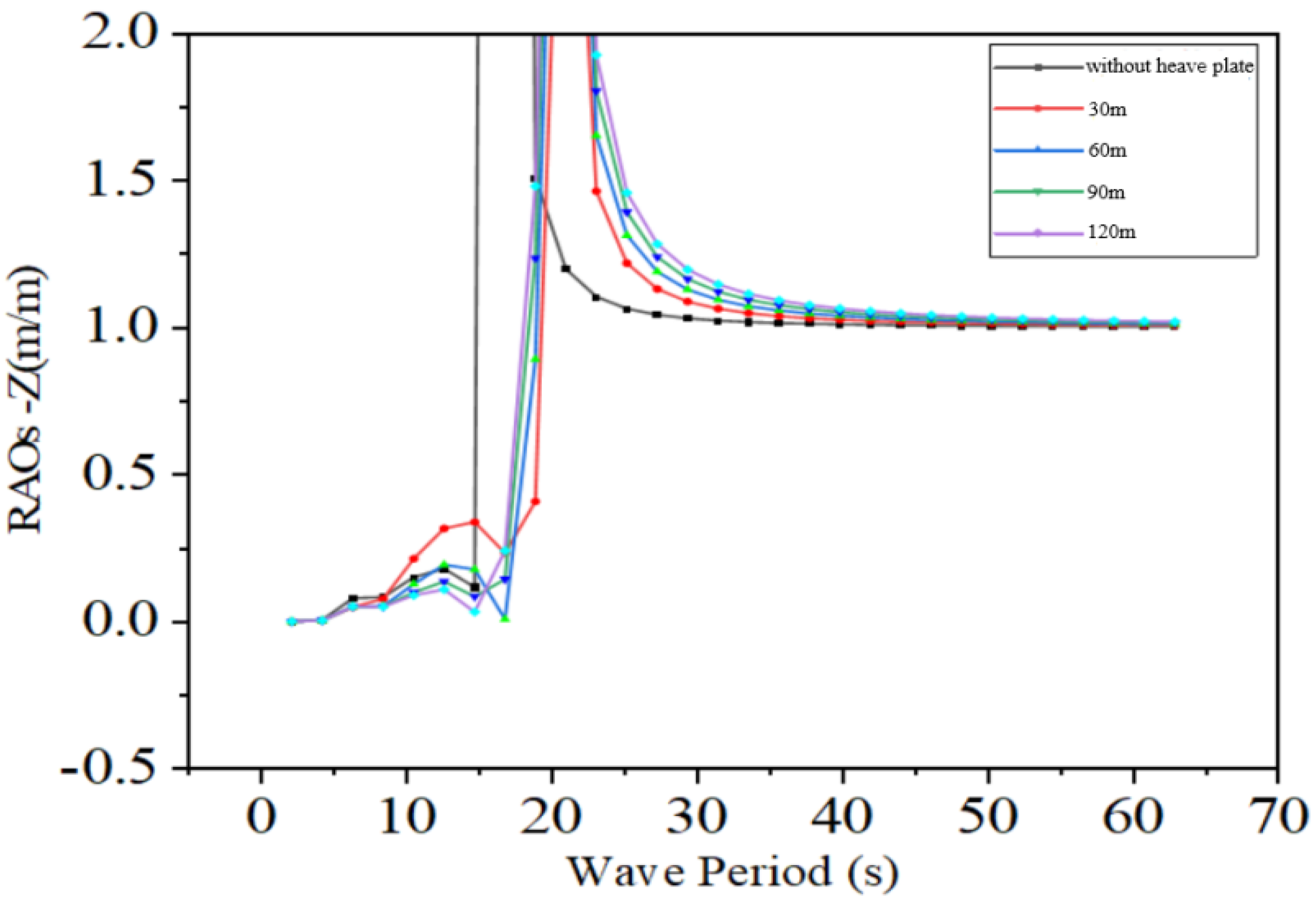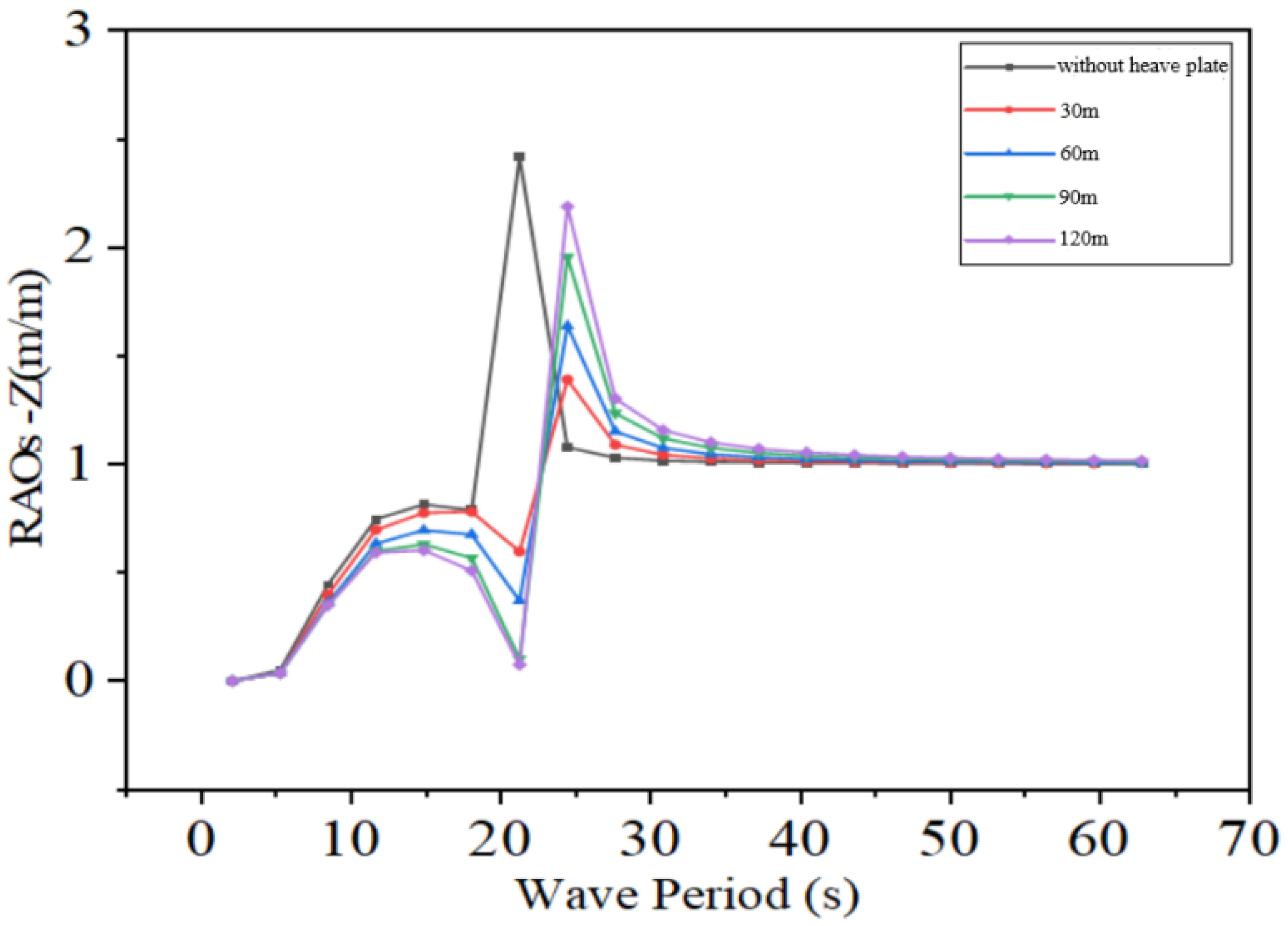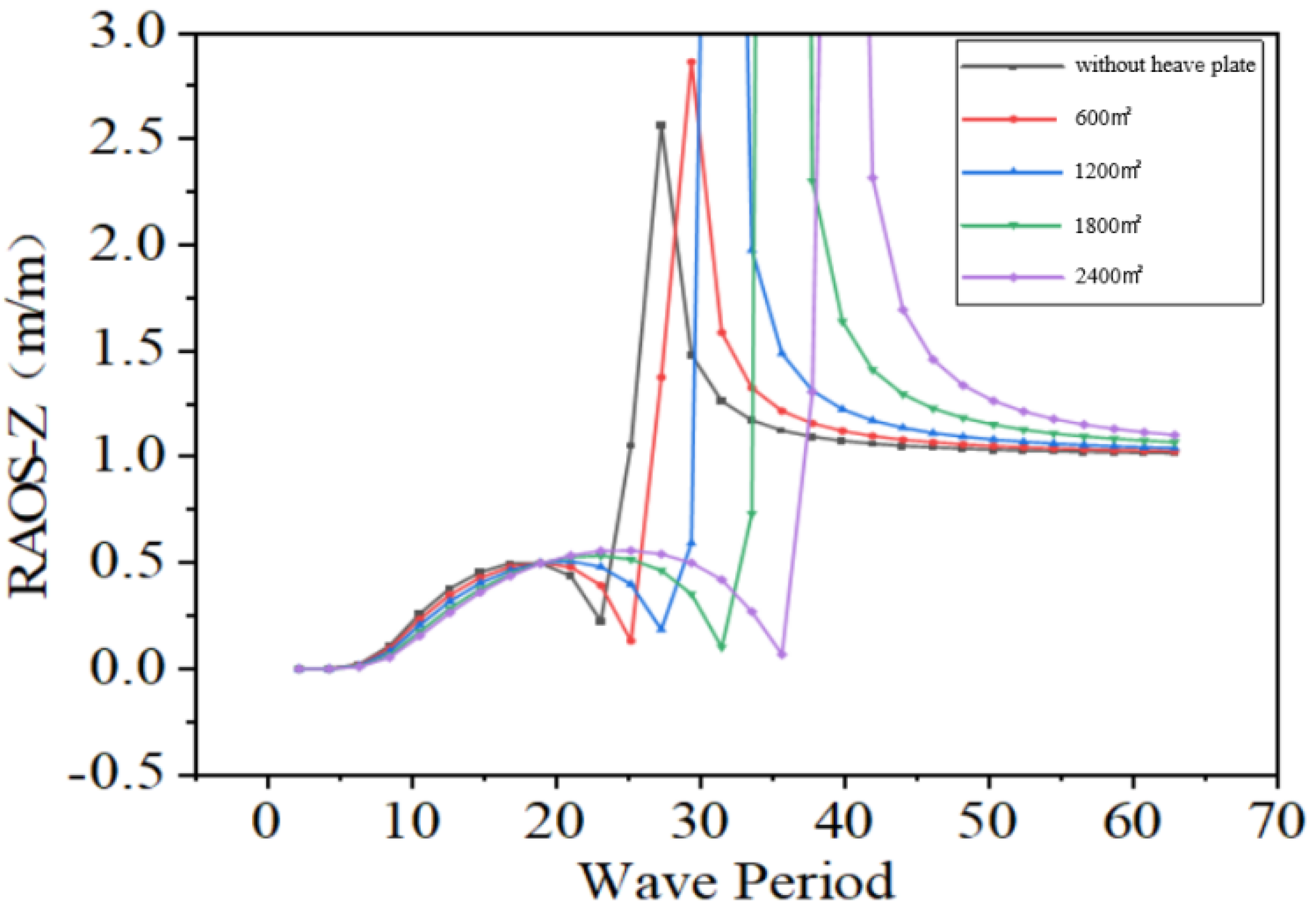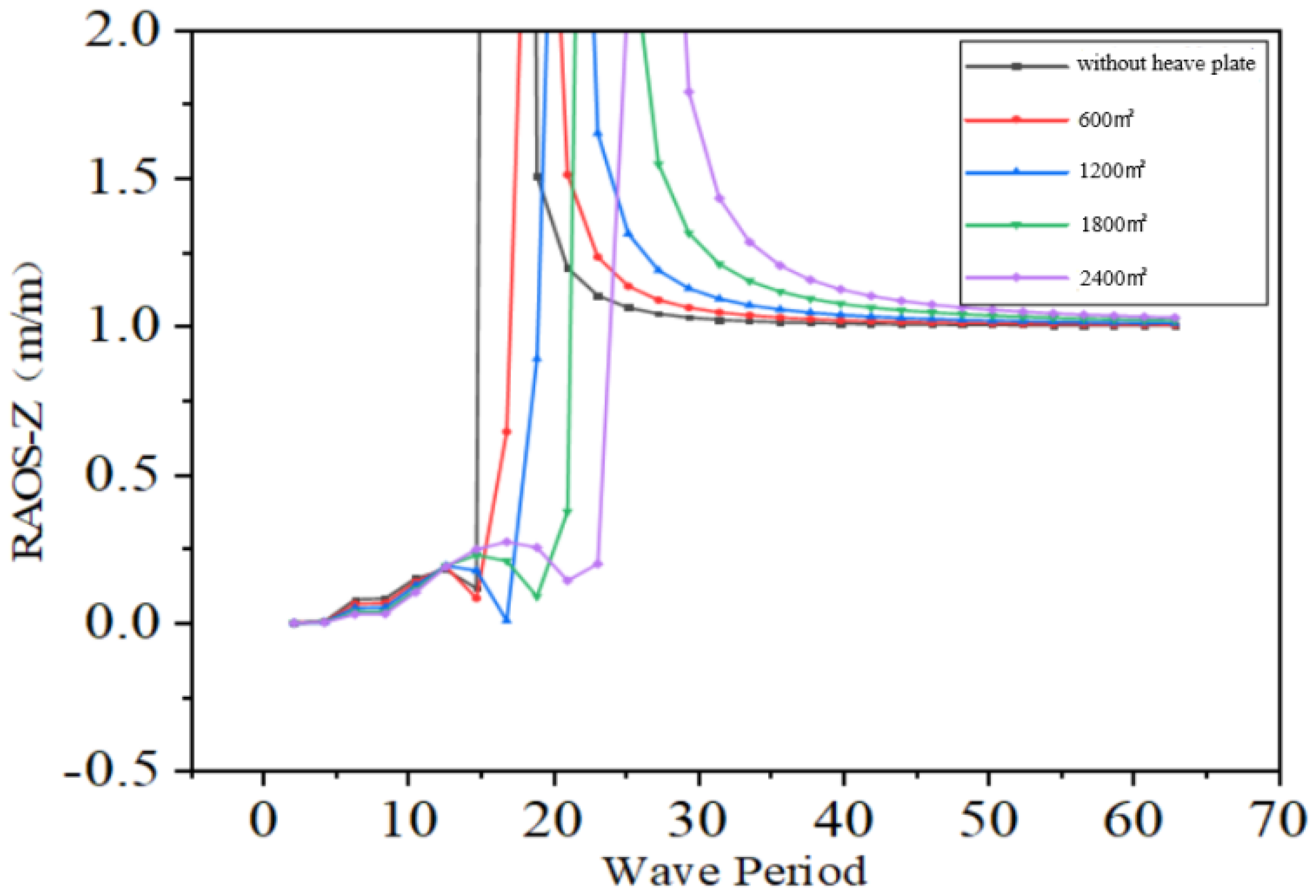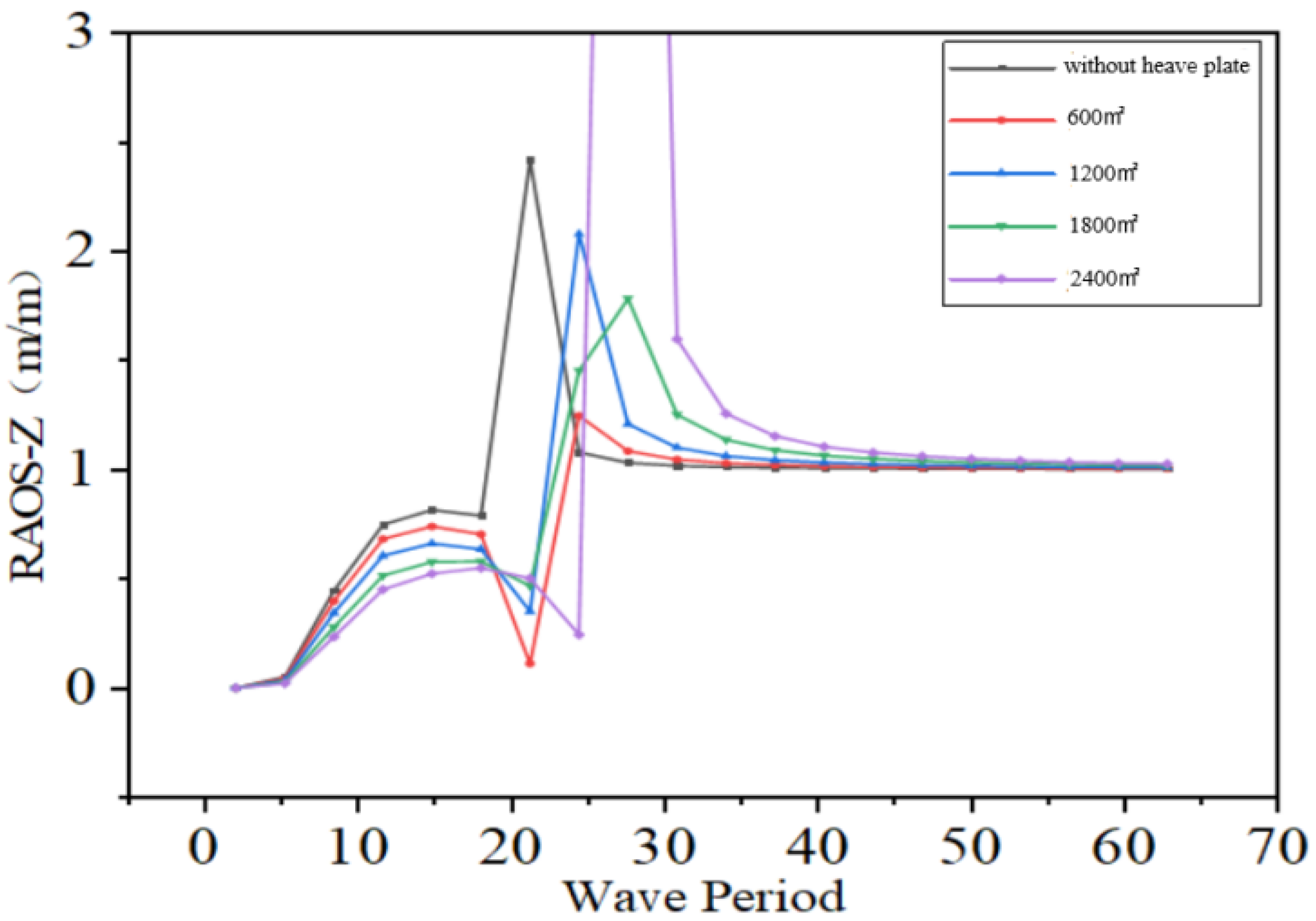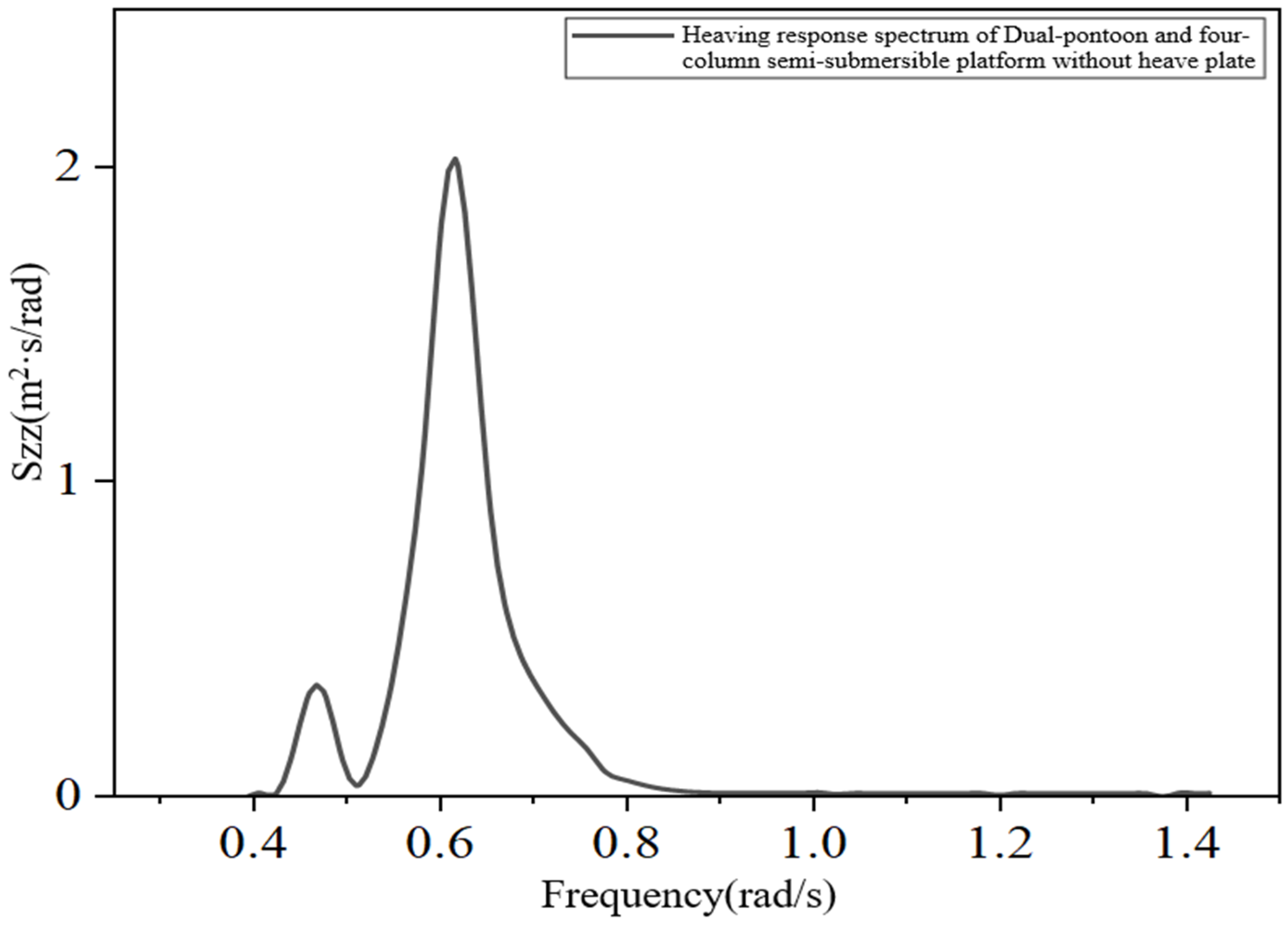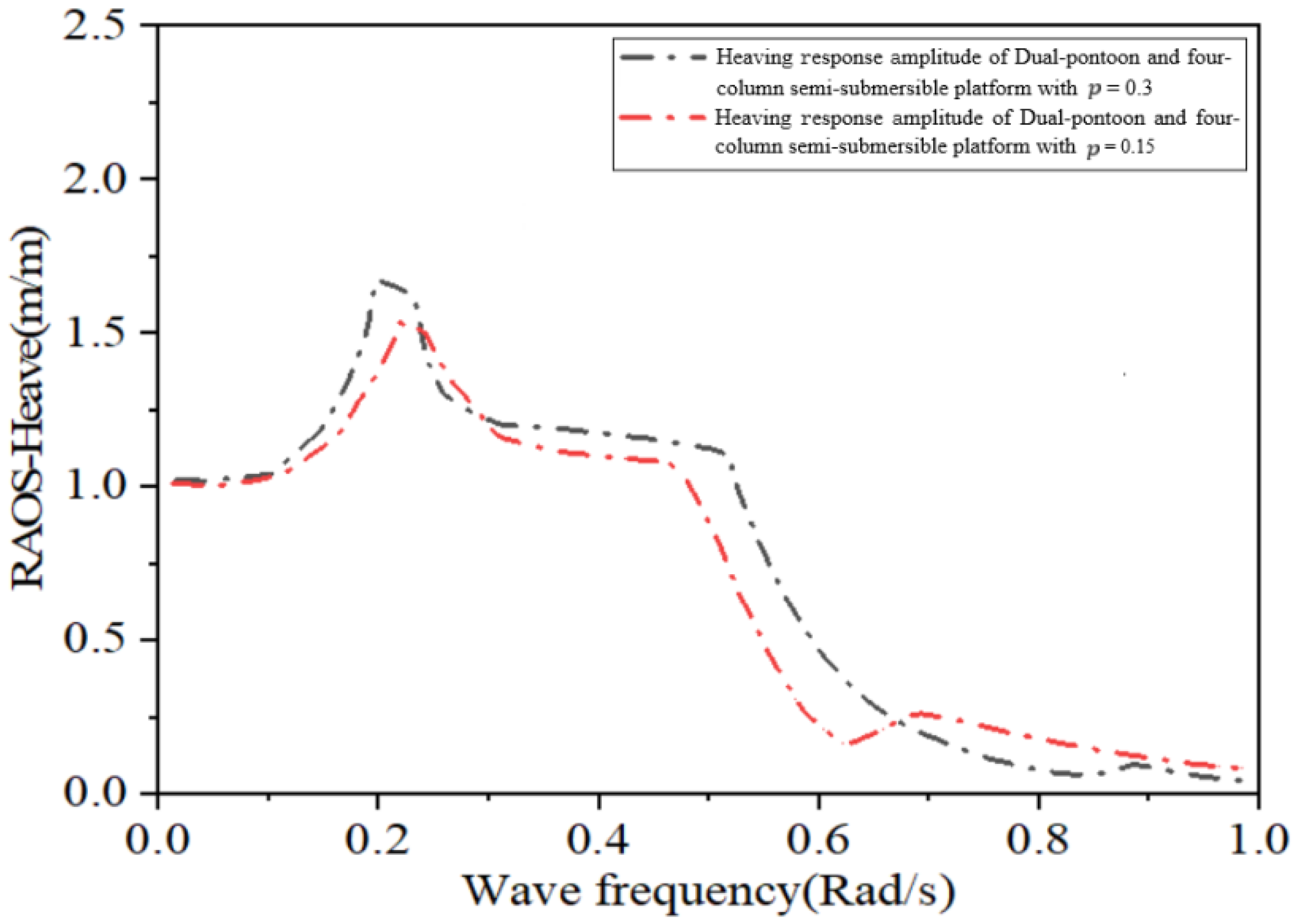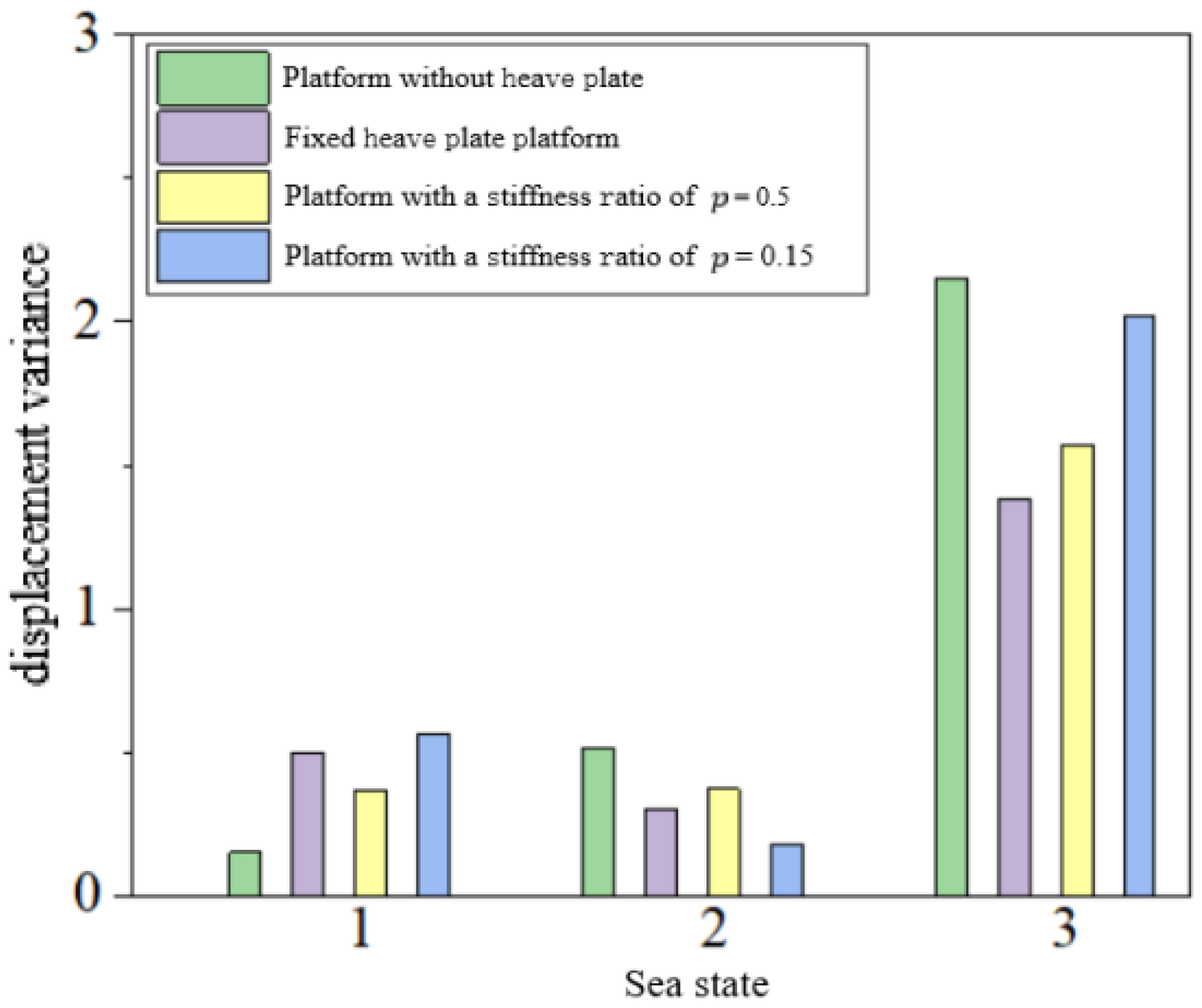Since Frahm proposed the TMD, it has been widely applied in aerospace, construction, machinery, and other industries [
30]. Structures prone to severe pitching and rolling (e.g., wind turbine nacelles) and super high-rise buildings (e.g., the Shanghai World Financial Center and Taipei 101) are equipped with TMD dampers. Ordinary TMDs dissipate energy in the form of heat during the energy absorption process. However, over the past decade, some scholars have replaced TMD devices with power generation structures, thereby achieving the goal of energy collection [
31,
32,
33,
34,
35]. Among these efforts, Nerubenko et al. (2019) proposed using TMDs in conjunction with generators to reduce the dynamic load on ocean buoys [
36].
In practical engineering, a large number of floating structures are constantly subjected to wave impact loads, which is detrimental to both the normal operation of personnel and the fatigue life of the platform. The hydraulic PTO system can be regarded as a power-generating TMD, as it exhibits damping during power generation and the spring within the hydraulic cylinder can provide restoring stiffness. If the hydraulic PTO system can be used rationally to absorb vibration energy for power generation, it will be possible to reduce platform rocking while harnessing wave energy.
3.1. Principle of Vibration Damping of the PTO System
If the setting depth of the heave plate is too large, it will drastically increase the cost; if it is too shallow, the desired effect will not be achieved. Based on the above conclusions, considering the aspects of cost and construction convenience, the heave plate is arranged at a depth of 60 m underwater. According to the position of the columns of the dual-pontoon and four-column semi-submersible platform, and for the convenience of arranging the truss structure, the area of the heave plate is selected to be 1200 m2.
Based on the principle of tuned damping, in forced vibration, the heaving period of the platform and the period of the incoming waves tend to be equal. Moreover, the wave-induced force acting on the underwater heave plate is much smaller than that at the water surface. This makes it possible to adjust the phase difference between the motion of the heave plate and that of the platform by adjusting the rigidity of the PTO system.
According to the reciprocating heaving motion of the platform, the hydraulic PTO system connects the floating platform and the heave plate. This not only reduces the motion of the platform but also captures a significant amount of wave energy. Due to the pitching, rolling, and other motions of the floating body in different degrees of freedom, multiple PTO systems are arranged at different positions to reduce the bending moment. Taking four PTO systems as an example, the PTO system is simplified into a spring-damping form, and the simplified structural model of the integrated platform is shown in
Figure 16.
The arrangement position and working mode of the hydraulic PTO system are shown in
Figure 17. The PTO system connects the heave plate truss structure with the main body of the platform. For a stationary floating platform, the mass of the heave plate is balanced by its buoyancy, which has little impact on the structure. For a moving platform, the mass of the heave plate itself and the mass of the water it needs to drive will greatly reduce the platform’s motion response.
3.2. RAO Calculation Method for Semi-Submersible Platform with Integrated PTO System
If the coupling effect of motions in other directions is ignored, the heaving model of this integrated platform structure under a single PTO system can be further simplified.
Figure 18a shows the traditional fixed heave plate platform model, and
Figure 18b shows the model of the platform after it is connected to the heave plate by the PTO device. The numerical simulation method for the heaving response of the integrated platform is different from that for the response calculation of a platform with a fixed heave plate.
If
and
are used to denote the effective mass of the platform structure and the heave plate structure for numerical calculations, respectively, then the matrix form of the equations of motion of the system in the heaving direction is:
where:
—computational mass of the platform, which consists of the platform structure mass and the additional mass , i.e., ;
—computational mass of the heave plate, which consists of the heave plate structure mass and the additional mass , i.e., ;
—damping of the PTO system. Since its effect on the tuning frequency is small, the existence of damping is not considered for the time being, and is taken as 0;
—damping coefficient of the platform structure, including radiation damping and viscous damping , so ;
—damping coefficient of the heave plate structure, including radiation damping and viscous damping , so ;
—heaving hydrostatic restoring stiffness of the platform structure, which is proportional to the waterplane area of the platform;
—equivalent PTO system stiffness;
—heaving displacement of the platform structure;
—heaving displacement of the heave plate structure;
—vertical wave-induced force acting on the platform structure, which is determined by the lower wet surface of the platform and the water depth. It can be considered equal to the wave-induced force acting on a fixed floating platform;
—vertical wave-induced force acting on the heave plate structure, which is determined by the outer surface of the heave plate and the water depth. It can be considered equal to the wave-induced force acting on a fixed heave plate.
The effective mass, the total damping coefficient, and the vertical wave-induced forces
and
of the dual-pontoon and four-column semi-submersible platform structure and the heave plate structure used for numerical calculations can be calculated and determined based on the wet surface geometry of the platform and the geometry of the heave plate. The hydrostatic restoring stiffness of the platform is determined by the waterplane area of the platform columns. The viscous damping of the platform and the heave plate can be expressed as:
where:
—Amplitude of the vertical displacement of the floating platform;
—Amplitude of the vertical displacement of the heave plate;
—Vertical projected area of the wet surface of the platform;
—Vertical projected area of the heave plate.
Then, the wave-induced force in the vertical degree of freedom can be expressed as:
where:
—Amplitude of the vertical wave-induced force of the platform;
—Amplitude of the vertical wave-induced force of the heave plate.
If the viscous resistance of water is ignored, and assuming that the center of gravity of the heave plate and the center of gravity of the platform coincide in the vertical projection, the wave-induced force
acting on the platform and the wave-induced force
acting on the heave plate have the same frequency and phase. Define
,
,
,
, and
as follows, respectively:
If the mass ratio of the heave plate to the platform, the ratio of the natural frequency of the heave plate to that of the platform, and the ratio of the incident wave frequency to the natural frequency of the platform are defined as follows, respectively:
Since the steady-state period is the same as the excitation period in forced vibration, and only the phase is different, the platform displacement
and the heave plate displacement
can be set as follows, respectively:
Thus, Equation (1) can be rewritten as:
If the additional mass coefficient is defined as follows:
Then, the solution to Equation (6) is:
Thus, the modulus of the amplitude of the heaving response of the platform body and the heave plate of this integrated system is:
In the first step of the solution, set the vertical viscous damping of the floating platform and the heave plate to 0 first. After solving Equation (6) to obtain the amplitudes of the vertical motion responses of the platform and the heave plate, use Equation (2) to correct the viscous damping. Then, substitute the obtained viscous damping into Equation (6) and iterate again until the solution accuracy requirements are met. If the JONSWAP spectrum is denoted as
, the heaving displacement response spectra
and
of the floating platform and the heave plate can be expressed as follows, respectively:
3.3. Optimization of the Equivalent PTO System Stiffness Under Specific Sea States in the South China Sea
The calculated natural period of the platform is about 23 s, which avoids the spectral peak period of waves (10 s) in the maximum working sea state of the South China Sea. This separation from the wave energy period indicates a rational design to avoid resonant motions. Next, the PTO system stiffness needs to be selected with the aim of adapting to the sea state of Level 5. Taking the maximum working sea state parameters near the Dongsha Islands in the South China Sea as an example, the PTO system stiffness,
, is studied to account for the resonance of the coupled system of the heave plate and the platform. Under this sea state, the results of solving the heaving response spectrum
of a conventional dual-pontoon and four-column semi-submersible platform are shown in
Figure 19. The results show that the heaving response spectrum of the platform peaks at approximately 0.6 rad/s, which is close to the period of the sea state and exhibits the characteristic of a narrow wave frequency band. Therefore, the heaving response of the platform within this period range needs to be adjusted.
Next, under the sea state near the Dongsha Islands in the South China Sea, the damping effects of different stiffness values of the PTO system,
, are studied according to Equations (1)–(11). If slack mooring is adopted and the coupling effect between the restoring force provided by the mooring system and the motions in other directions is ignored, and if the ratio of the equivalent PTO system stiffness to the hydrostatic restoring stiffness of the platform is defined as
, the responses of the platform and the heave plate for different ratios of the equivalent PTO system stiffness,
to
, are shown in
Figure 20. The heaving response of the platform main body is the smallest when the ratio of the equivalent PTO system stiffness to the hydrostatic restoring stiffness of the platform,
0.15, and the response amplitude is approximately 0.84 m. When 0.3 <
< 0.6, the integrated system actually increases the extreme value of the platform response. As the stiffness ratio increases, the difference between the heaving displacements of the floating platform and the heave plate decreases and tends to a certain value.
Figure 21 shows the variation of the heaving response of the integrated platform with the wave period for stiffness ratios
of 0.15 and 0.3, respectively. It can be seen that for high-frequency waves, the heaving response of the platform with a stiffness ratio of
= 0.3 is better than that with
= 0.15, while the opposite is true for low-frequency waves.

